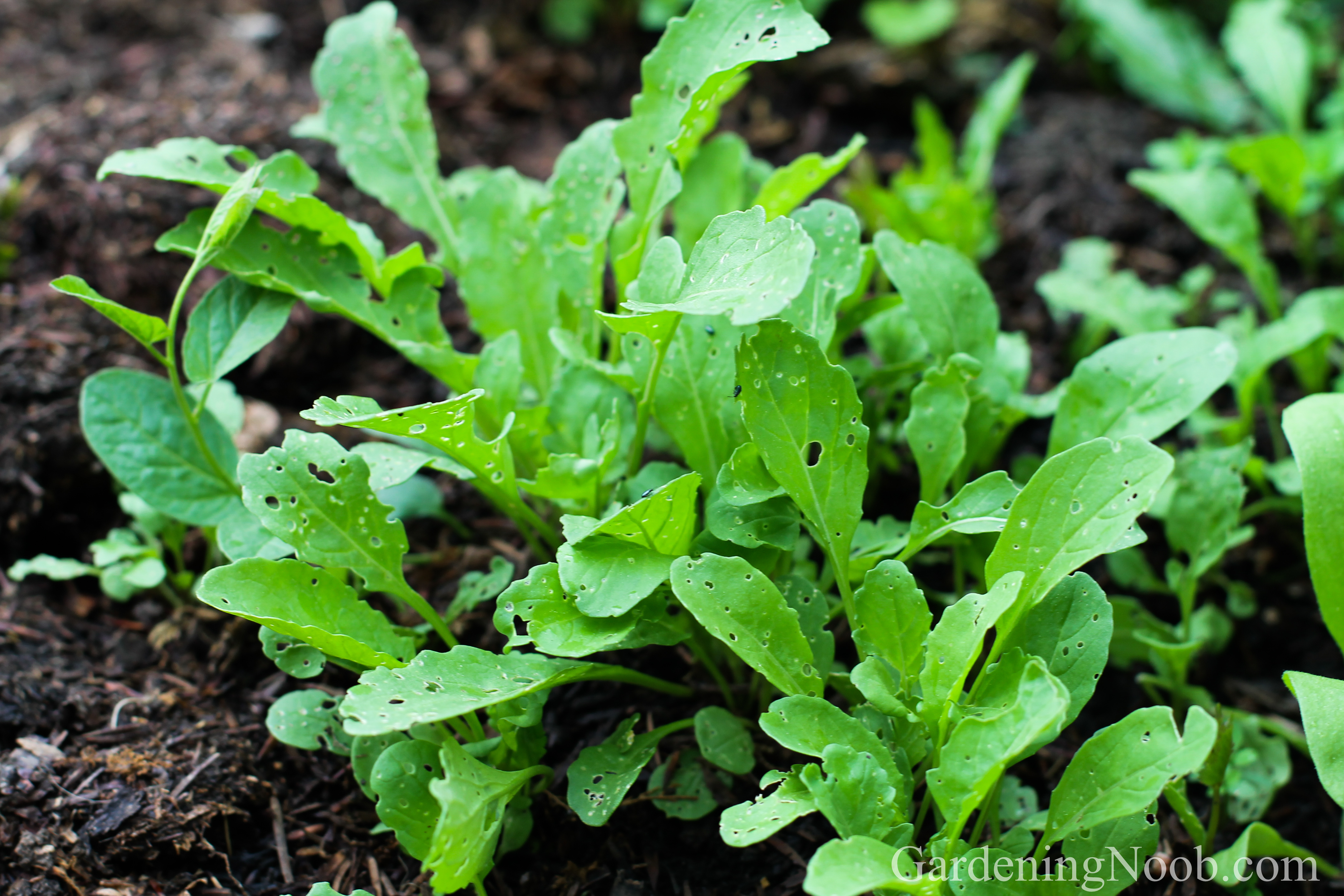
I always look forward to planting and growing arugula. It’s not just because I love the nutty flavour of it’s leaves in my salads. It’s also because arugula is a fast-growing and quick-maturing vegetable. Once I plant it, I know it won’t be long before I can start picking it and enjoying it. It is usually ready for harvest just two months after sowing!
Unfortunately, this leafy green is also very quick to bolt. Don’t get me wrong. It’s tiny, dark-veined white flowers are eye-pleasing indeed. But what I don’t like about its flowering is the way it changes the taste and the texture of the leaves. As soon as arugula sends up the flowering stem, it’s leaves become bitter, much more spicier and tough. Almost inedible…
Luckily, I have discovered a few tricks which help me delay the bolting (or flowering if you prefer), at least for a while that is. They are easy to put in action and allow me to enjoy this delicious leafy vegetable for longer!
Want to find out what they are? Keep reading then and discover my step-by-step guide on how to plant and care for arugula so it grows fast and vigorously, starts bolting as late as possible and gives you plenty of harvest…
Find growing spots which get shaded in the afternoon…
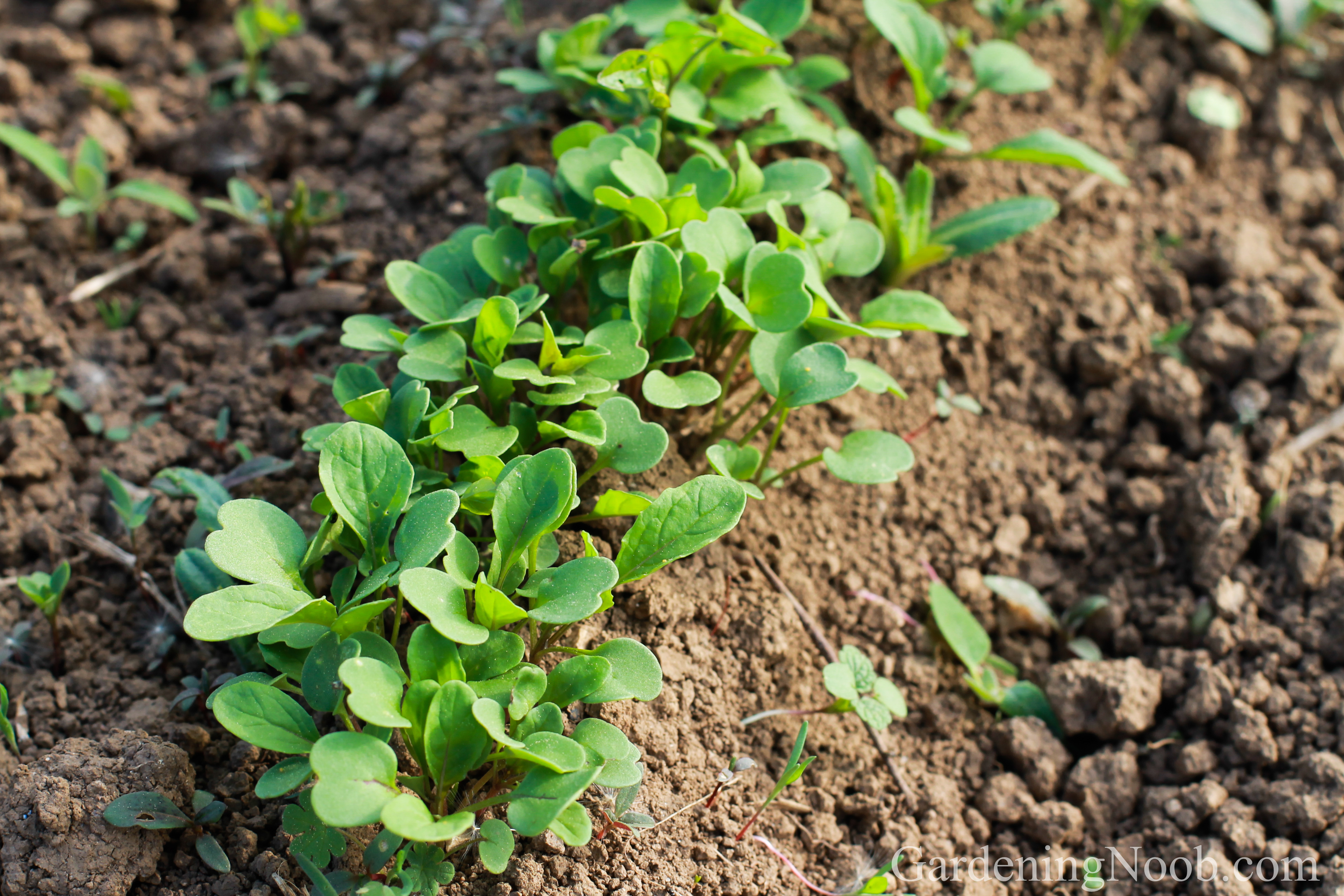
The first thing I suggest is to find appropriate growing location. When I first started, I didn’t pay much attention to where exactly I grow arugula. In fact, I randomly picked different spots throughout my growing plot and then planted seeds there. Sometimes I sowed them in rows, sometimes in patches…
That changed when I discovered the following: Arugula likes lots of sun, but only when the temperatures outside are cool. It bolts (starts flowering and developing seeds) as soon as the weather heats up!
The sun in early spring isn’t a problem at all. It stays cool outside even if the sky is completely cloudless. However, once we get close to end of spring and beginning of summer, air temperatures rise significantly. It can get very hot during the day. Especially in the afternoon. Unfortunately, it only takes a day or two of such direct afternoon sunlight exposure to push arugula over the flowering edge. Once it gets overheated, it stops growing new leaves and focuses it’s energy into forming flowers and seeds instead. Shortly after, all it’s remaining leaves become much more bitter, peppery and harsh and are no longer suitable for eating. That’s when it’s leaf harvesting period ends…
So one thing I do to delay the beginning of flowering is plant arugula in those parts of my garden which get an afternoon shade. It doesn’t prevent the bolting (flowering), but it sure does postpone it for a week or two.
Enrich the soil with organic mattter…
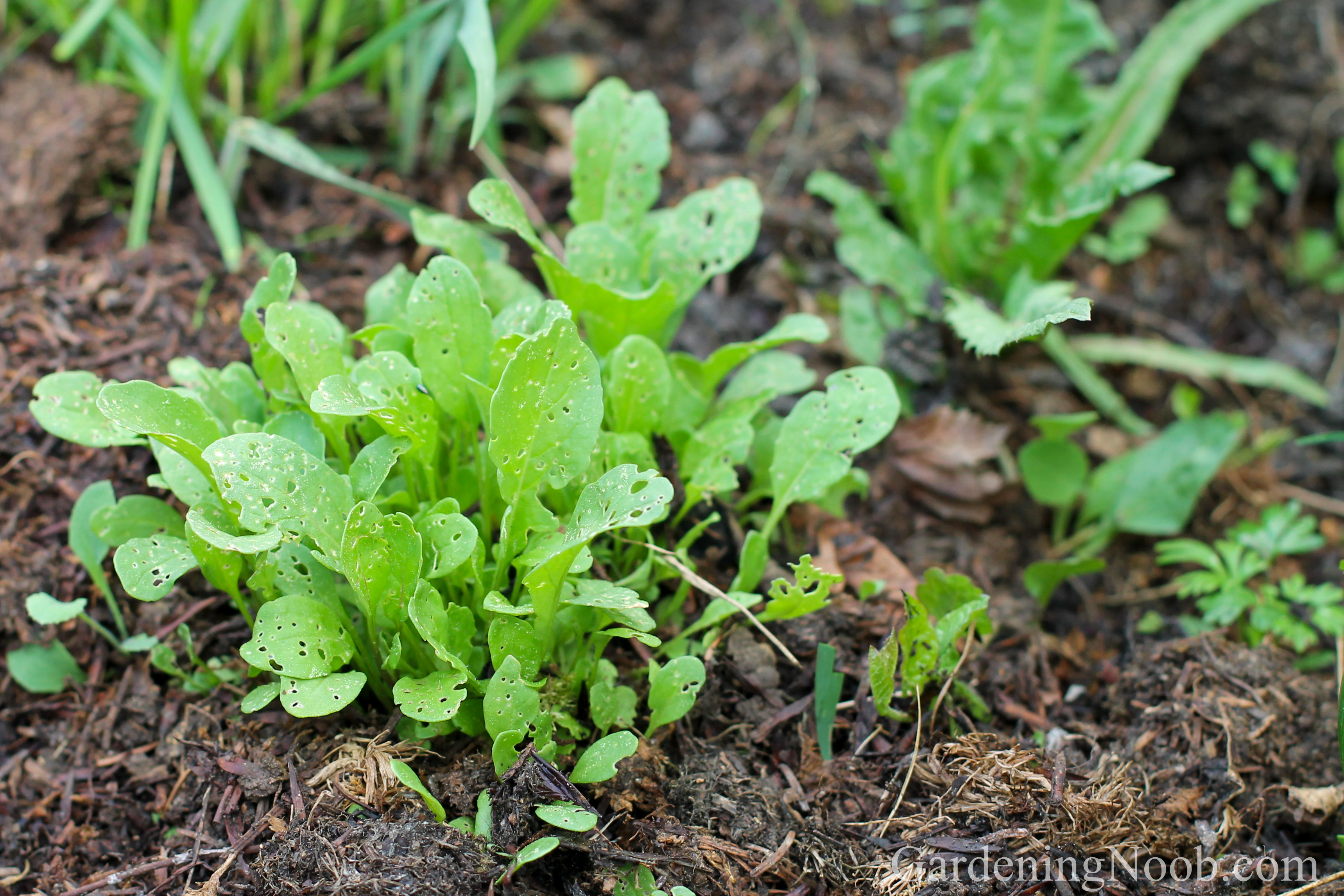
After you select the best growing spots, it’s time to ensure the soil in the selected growing spots has all the nutrients this leafy green needs to grow fast. Perhaps the easiest way to do this is to spread well-aged compost over the intended growing area.
Now what if you don’t have any compost available yet? Then you’ll have to find other sources of organic matter and incorporate them into the soil. My favorite combination is the mixture of coffee grounds and dry, brown tree leaves. Of course, there are other options too. I explain everything here, so I won’t go into more details right now. But I would like to point out a few important things…
First of all, for a good harvest it’s absolutely vital that you have a nutrient-rich soil. You have to enrich the soil prior to planting. In one way or another. Yes, it does take time and effort. And yes, it may be a bit overwhelming. Especially if you have little or no gardening experience and have never done it before. But I’m afraid there is no other way, in particular if you intend to grow it in:
- a virgin soil (soil which hasn’t been cultivated before),
- or in a soil which is abandonded and hasn’t been cultivated for years.
And second of all, you have to do it soon enough. It doesn’t work otherwise. You see, the incorporated organic matter needs months of time to properly break down and release nutrients into the soil. It certainly doesn’t happen over the course of one single night. So do it at least one month prior to planting. In fact, the sooner, the better…
I usually take care of it just before the winter starts. Why? Well, there’s plenty of leaves available at the time. And I’m lucky enough to have an acquaintance who works for a coffee vending machine company. With his help, I can get as much coffee ground as I need. So what I do is take the leaves and the coffee grounds (and other plant residues I can get my hands on) and spread everything over my growing plot.
This mixture breaks down through the winter and releases nutrients into the soil by the time spring starts. Arugula loves such richly enhanced soil and thrives in it!
Plant it at the right time…
Did you select the proper growing spots and ensured the soil there is nutrient-rich? Good for you. You then have everything in place to start planting. Now you just have to wait for the right moment…
And, speaking of the right moment, when exactly would be a good time to start planting and growing arugula?
You’ll find a detailed answer to this question here. In short, there are two time periods in a year, which are most suitable for planting and growing this leafy green. The first one is early in spring. And the second one is towards the end of summer and beginning of autumn. The weather in these two time periods is cool and rainy for the most part, which is ideal for arugula’s leaf growth. So don’t wait too long once the right timing comes. Get out and start sowing!
Jumpstart the seeds after planting…
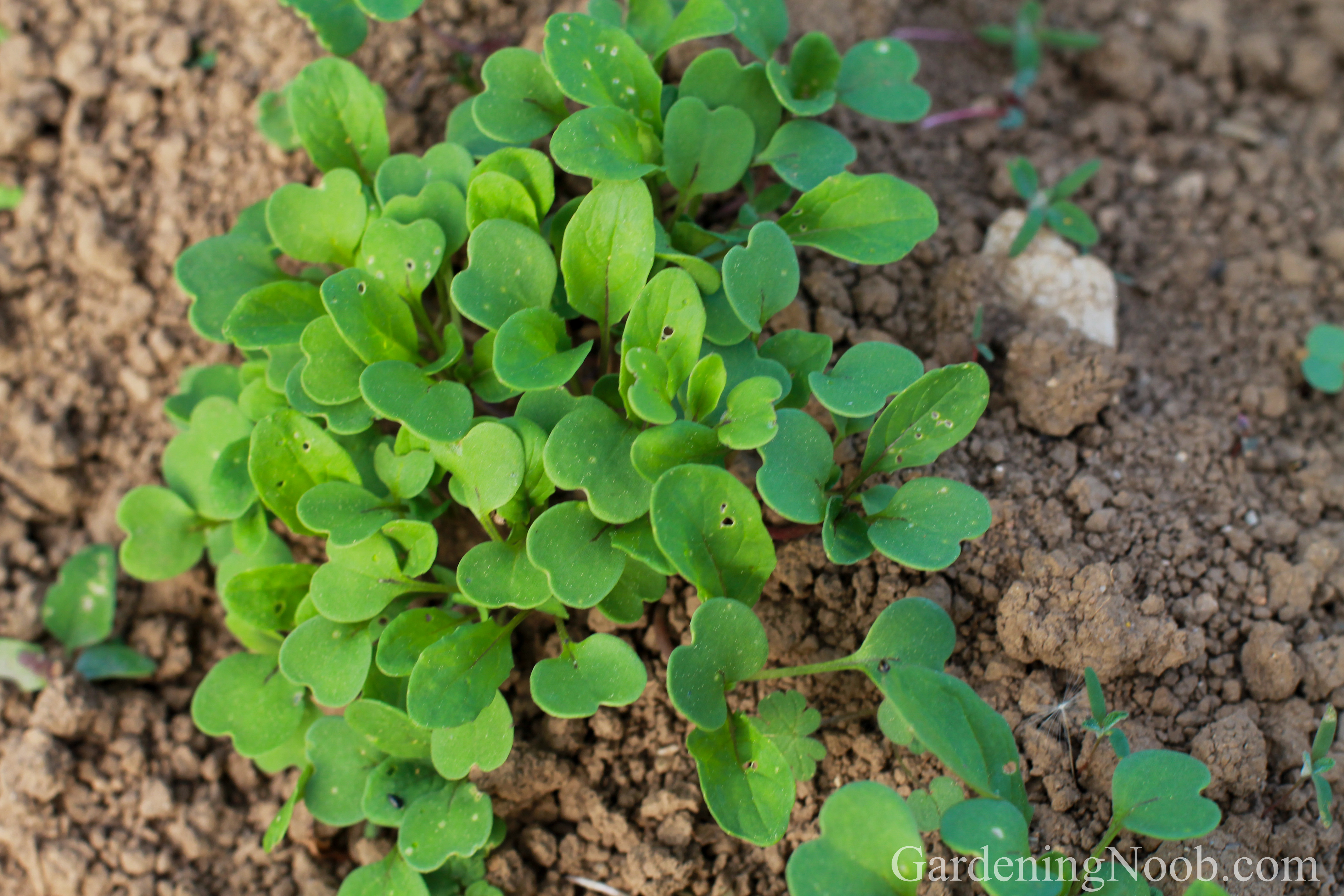
You have nothing to worry about as far as planting arugula seeds goes. It is no rocket science. All you have to do is take the seeds in you hand, broadcast them over the chosen growing spots and lightly cover them with soil. The seeds eventually germinate and, later on, develop into plants you can harvest…
As simple as this sounds, it does work and will get you the harvest. In fact, plenty of harvest, if you do all the other things we already discussed right.
Nonetheless, you can take things a bit more serious and help your plants come out of the ground and start growing even faster. Let me share how:
- Don’t bury the seeds too deeply. Arugula has shallow roots. It doesn’t germinate if I exaggerate with the sowing depth. Trut me, it is more than enough if you just lightly cover them with soil.
- Plant them in moist soil. Water activates the germination of seeds. It also helps newly-born plants to develop and grow fast. So I always try to do my sowings just before or right after the rain. This is easy to do in early spring since the soil is usually wet because of melted snow and frequent rains. The end of summer and the beginning of spring is an entirely different story though. The ground is oftentimes completely dried out after being through months of intense heat and no (or very little) rain. In such cases, you have no choice but do the watering yourself. Otherwise the seeds take very long to germinate. And you lose precious growing time.
- Maintain the soil moisture after the planting. Once the seeds are in the ground, my biggest concern is to keep the soil moist at all times. So I pay close attention to it. If it dries out, and there’s no rain in the forecast for the upcoming days, I water it. This helps plants develop and get ouf of the ground fast and thus keeps the growing momentum going.
- Protect the spring-sown seeds with garden fabrics. Arugula seedlings and mature plants can cope with low early spring temperatures well. The seeds not so much. The cold slows down their germination to a great extent. I fight against this early spring’s germination-inhibiting cold with frost covers and other cold-protective garden fabrics. These keep the soil underneath a few degrees warmer and thus help the seeds germinate faster.
These things are simple to do. It also doesn’t take long to implement them. But they sure reduce the lapse of time between planting and harvesting!
How to care for arugula once it comes out of the ground and starts growing…
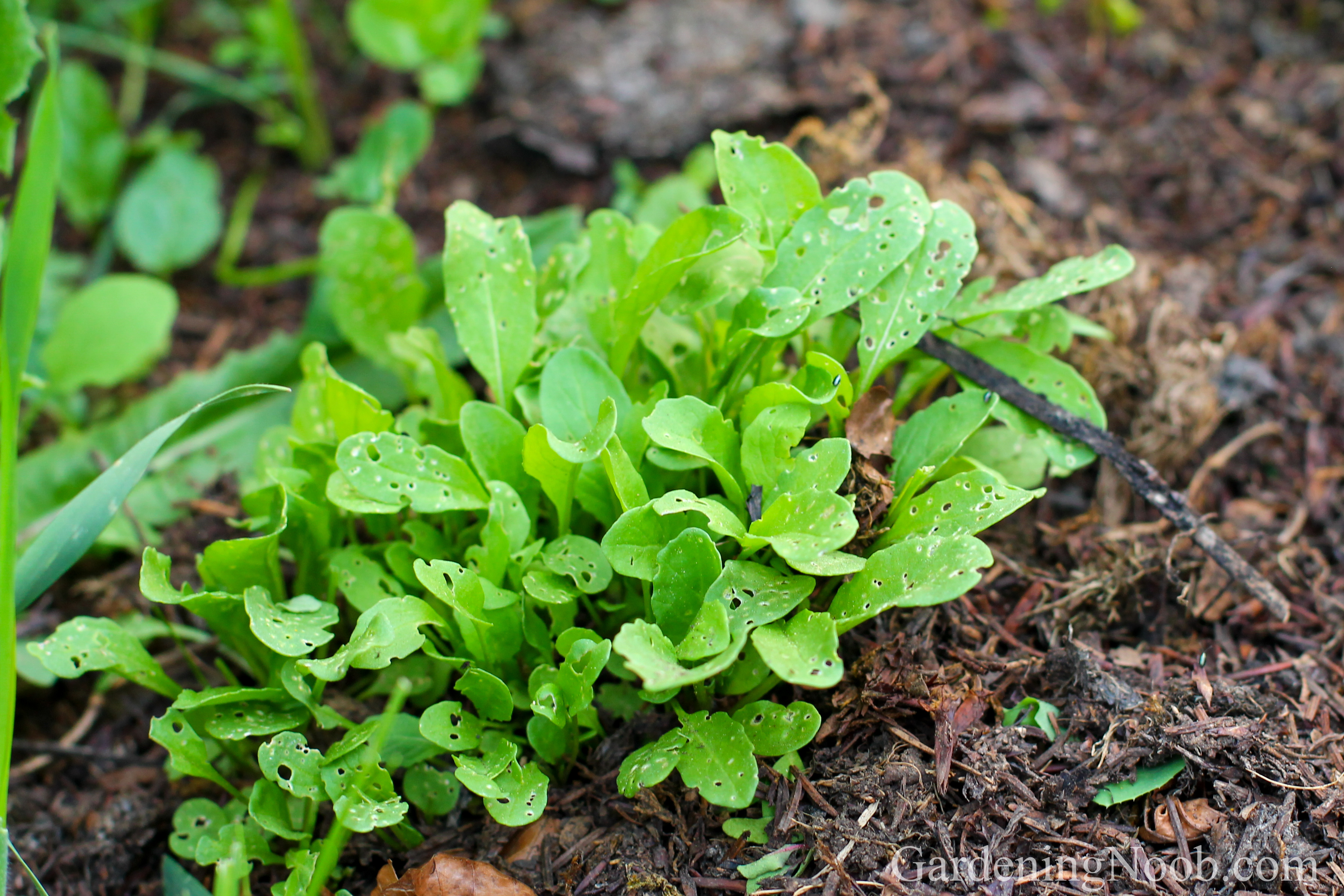
The truth is, arugula grows on autopilot, if you do certain things right from the start. Firstly, you need to choose the right growing spots. Secondly, you need to prepare the soil in those growing spots well. And thirdly, you need to plant it’s seeds at the right time…
Do these things right and you’ll see I’m not exaggerrating when I say that arugula is one of the easiest leafy green vegetables to grow!
There is always room for improvement, though. You can still do a lot to further speed up growth and development of your seedlings and help them reach harvest size even faster. Here is what I recommend:
- Keep the plants well watered. Arugula forgives many mistakes, but leaving it waterless is not one of them. You should never let the soil it grows in to dry out completely. It stunts it’s rapid growth and makes it’s leaves less palatable. Of course, rain is always the best source of water, but remember, tap water is still better than no water. So do the watering yourself if you have to.
- Thin the plants once they get overcrowded. You can plant seeds too densely, but don’t forget to thin the plants once they come ouf of the ground and get overcrowded. When you remove excess plants, you create better growing conditions for the remaining ones. They now have more space available as well as easier access to water, light and nutrients. Consequently, they grow and develop faster. A word of caution though. Don’t just pull the plants out. It disrupts the roots of the nearby plants and thus stunts their growth for a while. Instead, use small scisscors and cut them off at ground level. And don’t overdo it. Start slowly and gradually and only when it gets crowded.
- Keep the weeds down. Arugula unfotunately doesn’t compete well for resources with weeds, especially while it is still young and tender. You should remove any unwanted self-sown plants growing nearby as soon as you spot them. Otherwise they will slow down the growth and development of your plants. Be careful though. Just like thinning, weeding too can disrupt the roots of the vegetables growing in close proximity. It’s thus better to cut them off than to pull them out with your hands.
- Mulch the plants once they get bigger. Mulching is beneficial for arugula in many different ways. It helps keep the weeds at bay. It helps maintain the moisture in the soil. It also helps protect the ground it grows in from overheating, which is very important in late spring when sun gets really strong in the afternoon. As far as the material for mulching goes, you can use whichever you have at hands. It can be compost. It can be untreated grass clippings. It can even be weeds you just got rid off. All of them work!
- Shade them with bigger plants. I already mentioned how shade protects this leafy green from late spring and early summer heat stress and thus delays the bolting (flowering). If you can’t find any growing spots with an afternoon shade in your gardening spots, you can still shade the arugula with other, taller and faster-growing vegetables, flowers or fruits. I do it with pot marigolds, strawberries, peas and even with garden leak. It takes a bit of planning and thinking, but, once you figure it out, it’s really not that difficult to implement it.
- Harvest them. To be honest, I don’t know whether harvesting speeds up the growth of arugula or not. However, I’m certain it does delay the bolting (flowering) for a while and thus extends it’s picking period. But don’t go on a harvesting frenzy just yet. The trick is to do it at the right time. Start picking when leaves are about six centimeters (two inches and a half big). And always leaves some on the plant, so it can regrow itself faster.
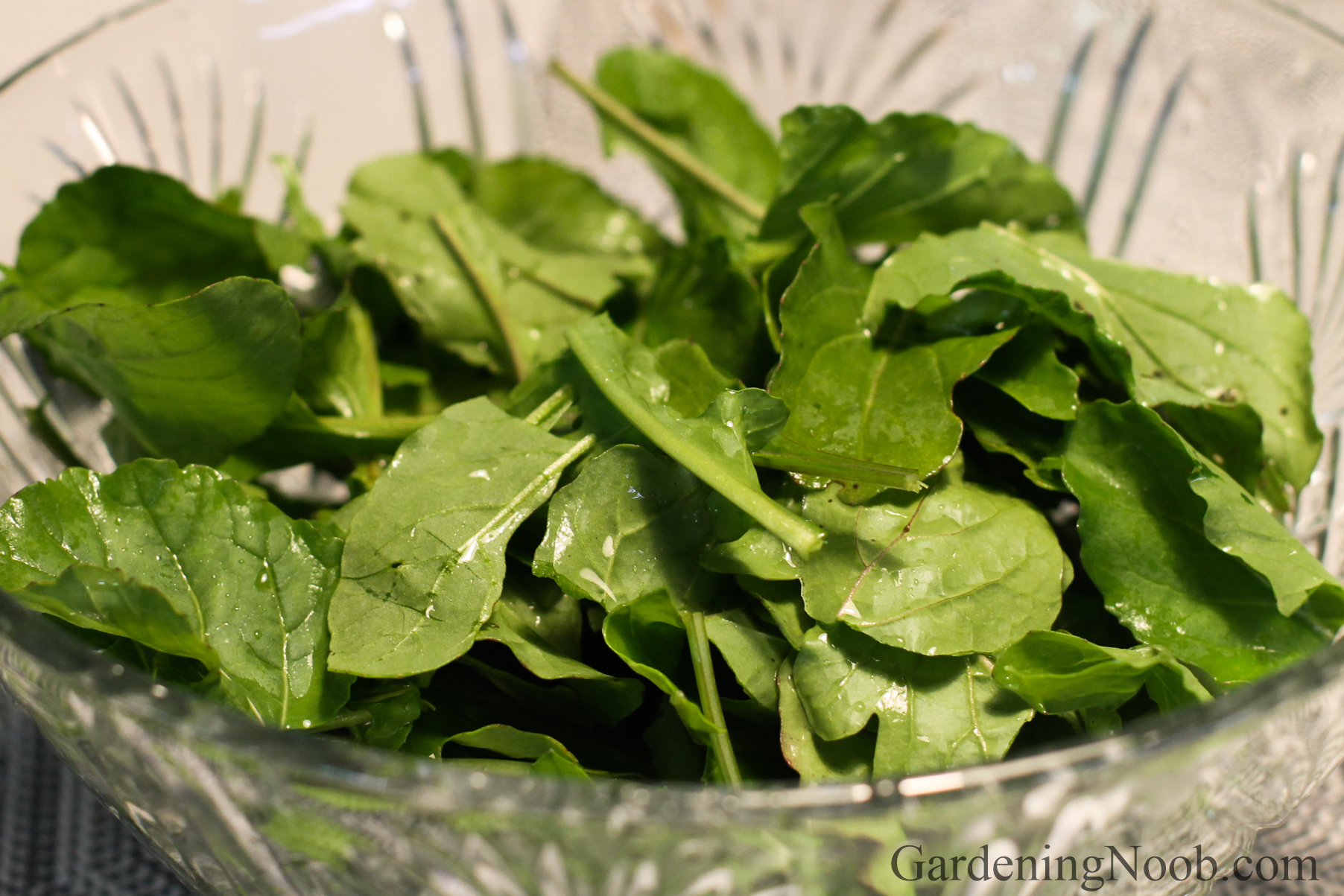
This is it. You have come to the end of my step-by-step guide about planting and growing arugula. Put it in action and I’m confident you will get plenty of harvest out of your plants!
